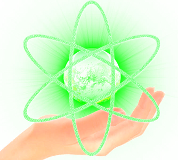F. Ridolfi, F. Cardone, G. Albertini
Abstract
This work focuses on the characterization of the damage to a ferrite bar after exposure to ultrasounds. In particular, one of several damage zones on the surface of the bar is investigated through optic microscopes and ESEM. This damage zone is roughly circular in shape, blackish in color and have a maximum dimension of ∼ 1 mm. On a microscopic scale the damage zone has a cratered morphology consisting of cracked material with mass inferior to that of ferrite. The ∼ 20μm deep craters can be traced to local microexplosions caused by sub-surface reactions that have resulted in partial fusion of the ferrite, and a rapid cooling and vetrification of the fused material. In addition, a zone with a high density of deformed microcavities with irregular walls and maximum dimensions of 10μm have been observed inside the bar. The microcavities are partially filled with chaotic material lacking a clear shape. Preliminary EDS microanalyses of the amorphous cratered material of the damage zone have produced spectra showing several elements apparently foreign to the ferrite whereas the chaotic masses of the microcavities are characterized by an anomalous enrichment in carbon. These results are important because the damages were produced by ultrasounds which also caused the emission of neutron bursts. This appears consistent with a recently proposed theory predicting the occurrence of piezonuclear reactions following the sudden collapse of intercrystalline cavities.








